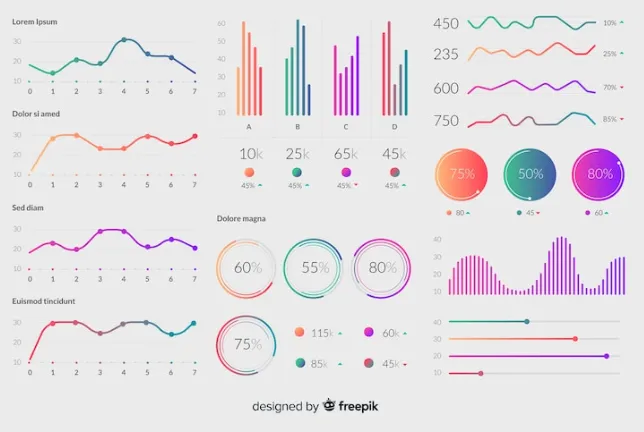
Top Shopify Analytics Tools 2023
October 5, 2022In today’s blog post, we will be discussing some of the best Shopify analytics tools that you can use to keep track of your online store’s performance.
Whether you’re just getting started or you’re looking for an advanced way to measure your business, these tools can help you understand your store’s performance and make smarter decisions.
1. Panoply
Every business wants to know how their online presence is performing, and what improvements can be made. Fortunately, there are many different tools and methods to measure and analyze web traffic and sales.
One of the most popular and versatile web traffic and sales measurement tools is Shopify. With Panoply, you can track customer activity and sales across all of your Shopify stores. Panoply provides detailed information on user activity, purchase behavior, and customer sentiment. This can help you optimize your Shopify store for increased traffic and sales.
Panoply also makes it easy to measure your company’s online presence across different platforms. You can track website traffic, social media shares, and email opens in addition to customer activity and sales. This information can help you see which platforms are most effective for your company and how you can improve your marketing efforts.
Shopify and Panoply are two of the most popular web traffic and sales measurement tools. If you’re looking to increase your online presence and sales, these tools are a great way to start.
2. Supermetrics
In today’s blog post, we’re going to be discussing some of the best Shopify analytics tools and Supermetrics. Supermetrics is a custom analytics platform that helps you track your website’s performance and optimize your marketing efforts.
Shopify is a well-known eCommerce platform that allows you to create a store from scratch, or use one of the many pre-made templates. Supermetrics is a great tool to use if you want to track your website’s performance and optimize your marketing efforts.
Supermetrics provides you with detailed analytics that help you track your website’s performance and measure your marketing efforts.
Some of the features that Supermetrics offers are:
– Visibility into your website’s traffic and conversion rates
– Detailed reports that show you where your traffic is coming from
– Analysis of your website’s performance across different channels
– Ability to track changes over time
– Automatic attribution of marketing efforts
Supermetrics is a great tool for website owners who want to track their website’s performance and optimize their marketing efforts.
If you’re looking for an analytics platform that offers detailed reports and attribution of your marketing efforts, Supermetrics is a great choice.
3. Google Analytics
If you run a Shopify store, then you should definitely give Google Analytics a try. Here are some of the benefits of using Google Analytics on your Shopify store:
1. You can track your website’s traffic sources. Google Analytics lets you see how your website’s traffic is generated. This is great information to help you figure out where your visitors are coming from.
2. You can track your website’s traffic trends. You can see how your website’s traffic has been changing over time. This can help you identify any changes in your traffic that you may need to address.
3. You can track your website’s traffic performance. You can see which pages on your website are driving the most traffic. This can help you optimize your website for better performance.
4. You can track your website’s overall engagement. You can see which pages on your website are attracting the most engagement (comments, shares, likes, etc.). This can help you improve your website’s engagement levels.
5. You can track your website’s conversion rates. You can see which pages on your website are converting visitors into customers. This can help you improve your website’s conversion rates.
6. You can track your website’s website speed. You can see which pages on your website are taking the longest to load. This can help you improve your website’s speed.
7. You can see how your website’s SEO is performing. You can see which pages on your website are getting the most organic traffic. This can help you improve your website’s SEO.
If you are interested in using Google Analytics on your Shopify store, then you should definitely give it a try. Google Analytics is a great tool for tracking your website’s traffic and performance.
4.Conversific
A Top Shopify Analytics Tool. Conversific.
Do you want to know how your store is performing? Conversific can help. It’s a powerful analytics tool that makes it easy to see how your store is performing across different channels and devices.
With Conversific, you can see how your store is performing across different channels and devices
Conversific lets you see how your store is performing across different channels, including:
– Web: The amount of traffic your store is getting from the web.
– Mobile: The amount of traffic your store is getting from mobiles.
– Email: The amount of traffic your store is getting from email campaigns.
– Social: The amount of social traffic your store is getting.
– Ads: The amount of revenue your store is generating from ads.
– CRM: The number
of leads your store is generating from CRM.
– Insights: See how your store is performing in terms of engagement and conversion rates.
With Conversific, you can also see how your store is performing in terms of:
– Engagement: How often people are visiting your store, how long they spend there, and how many pages they view.
– Conversion: How many people have made a purchase from your store, and how much money they’ve spent?
– Performance: See how your store is performing in terms of revenue, conversion rates, and pages viewed.
Get started with Conversific today to see how your store is performing.
5. Littledata
Do you want to know how your top Shopify stores are performing? The Littledata Top Shopify Analytics Tool can help you with that.
This tool lets you see how your stores are performing by category, month, and day. You can also see how customers are interacting with your products and see where your traffic is coming from.
This is a great tool for retailers who want to see where their sales are coming from and how they can improve their performance.
6. RevTap
If you’re looking to take your eCommerce business to the next level and get a better understanding of where your traffic is coming from, then you need to check out RevTap. is a top Shopify analytics tool that helps you track how visitors interact with your site and what leads them to buy.
RevTap gives you detailed insights into where your traffic is coming from, what pages are most popular, and how different marketing channels are affecting your sales. You can also see how your site is performing over time, and make adjustments to your marketing strategy accordingly.
RevTap is a valuable tool for any eCommerce business, and it’s free to try out. So head on over to RevTap.com and give it a try. You won’t regret it!
7. Power BI
Shopify Analytics is fully integrated with Power BI, so you can see your data in a beautiful and easy-to-use dashboard. You can also use this data to create insightful reports and charts that will help you to understand your business better. So whether you’re a small business owner who wants to stay on top of your sales and marketing, or you’re an entrepreneur who wants to create insightful reports and charts to help you understand your business, using Shopify Analytics and Power BI is a great way to get started.
When looking for top shopify analytics tools, it is important to consider the different needs of each business. Some businesses may require tools that can help track user activity, while others may need tools that can help them track their sales. Ultimately, the best shopify analytics tools will depend on the specific needs of the business.









